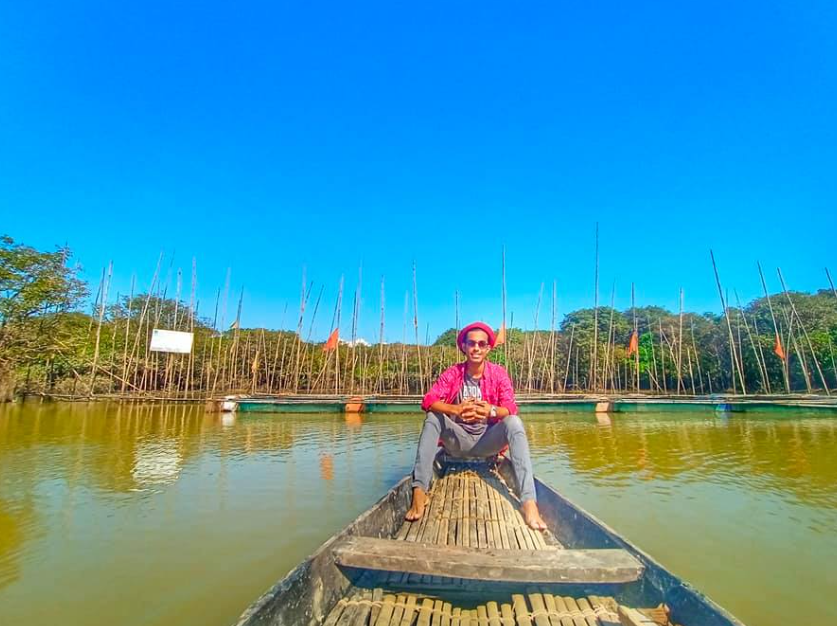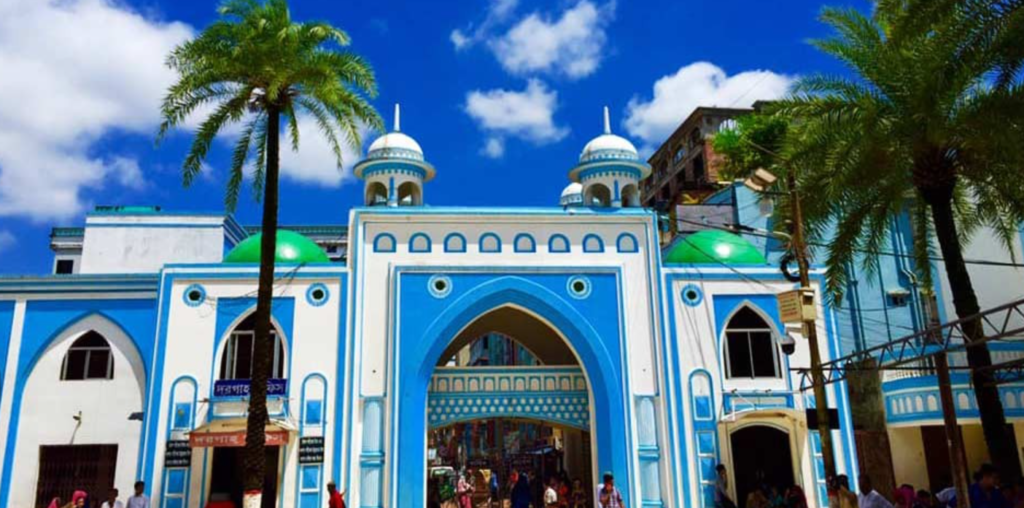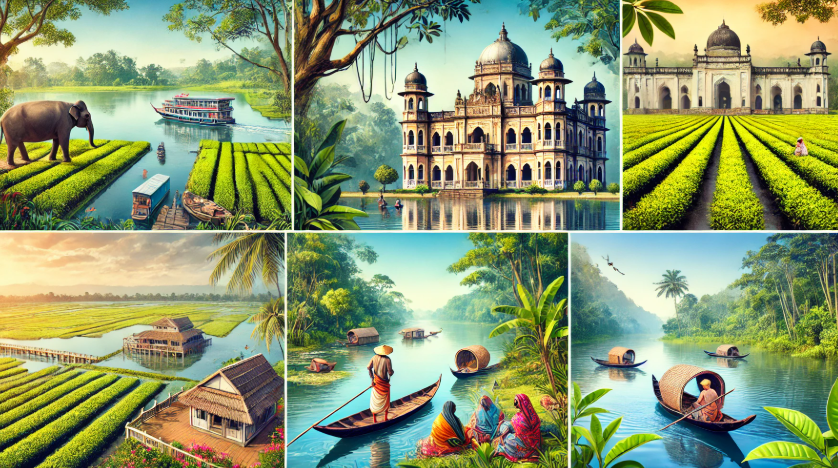Sylhet, located in the northeastern corner of Bangladesh, is a land of captivating beauty, cultural richness, and spiritual significance. Known for its emerald tea gardens, enchanting rivers, and revered shrines, Sylhet serves as a perfect blend of natural wonders and cultural heritage. This region, with its unique charm and deep historical roots, is an essential part of the country’s identity.
The Historical Tapestry of Sylhet
Sylhet’s history is rich and varied, marked by the influence of Hindu kings, Buddhist monks, and Muslim saints. In the 14th century, Hazrat Shah Jalal, a revered Sufi saint, arrived in Sylhet and transformed the spiritual landscape. He played a pivotal role in spreading Islam in Bengal, and his teachings continue to attract followers.
During the British colonial era, Sylhet gained prominence for its tea industry, becoming a crucial part of the global tea trade. After the partition of India in 1947, Sylhet became a part of East Pakistan (now Bangladesh).
Natural Wonders of Sylhet
1. Rolling Tea Gardens
Sylhet is synonymous with sprawling tea estates, such as Malnichhera Tea Garden—the oldest in the country. The sight of neatly pruned tea bushes on rolling hills is a visual treat. Visitors can enjoy guided tours of the gardens and learn about tea production while sipping on freshly brewed tea.
2. Ratargul Swamp Forest

One of Bangladesh’s few freshwater swamp forests, Ratargul offers a magical experience. Visitors can explore this submerged forest by boat, surrounded by trees that rise from the water. It’s a haven for nature enthusiasts and photographers.
3. Jaflong

Jaflong is a picturesque spot on the Indo-Bangladesh border, known for its scenic beauty and the Piyain River. The Khasi hills in the background and the traditional stone collection trade add to its charm.
4. Lalakhal

Lalakhal is famous for its vibrant blue-green waters, a rarity in Bangladesh. The pristine river, surrounded by hills, is a popular spot for boat rides and nature photography.
5. Hakaluki Haor
Hakaluki Haor, one of the largest wetland ecosystems in Bangladesh, is a paradise for bird watchers. During winter, migratory birds flock to this area, creating a spectacle of colors and sounds.
6. Lawachara National Park
Located near the town of Sreemangal, Lawachara is a biodiverse rainforest home to rare species like the Hoolock Gibbon. The park offers nature trails and the opportunity to explore its rich flora and fauna.
Cultural and Religious Significance
1. Hazrat Shah Jalal Mazar Sharif

The shrine of Hazrat Shah Jalal is a cornerstone of Sylhet’s spiritual heritage. It attracts thousands of devotees who seek blessings and pay homage to the saint.
2. Hazrat Shah Paran Mazar Sharif
The shrine of Hazrat Shah Paran, a nephew of Shah Jalal, is another prominent spiritual site. The serene atmosphere and historical significance make it a must-visit.
3. Sri Chaitanya Dev Temple
This ancient Hindu temple is dedicated to Sri Chaitanya Dev, a spiritual leader of the Bhakti movement. It is a site of great reverence for Hindu devotees.
4. Keane Bridge
The iconic Keane Bridge, built in the British era, is often called the “Gateway to Sylhet.” It spans the Surma River, symbolizing the city’s colonial past.
Sylhet’s Economy and Culture
1. Tea and Agriculture
Sylhet’s tea industry is the backbone of its economy, with over 150 tea estates producing high-quality tea. Additionally, the fertile land supports the cultivation of citrus fruits, particularly the aromatic shatkora, which is a staple in Sylheti cuisine.
2. Sylheti Diaspora
Sylhet boasts a significant diaspora community, particularly in the United Kingdom. The remittances sent back by these expatriates play a vital role in the region’s economic development.
3. Cuisine
Sylheti cuisine is renowned for its distinct flavors, with dishes like shatkora beef curry and pithas (rice cakes) taking center stage. The use of tangy and aromatic ingredients makes Sylheti food unique and memorable.
Upazilas of Sylhet
Sylhet district is divided into several upazilas, each with its unique attractions:
- Sylhet Sadar: The administrative and urban hub, home to major landmarks like Hazrat Shah Jalal’s shrine.
- Beanibazar: Known for its agricultural wealth and scenic beauty.
- Golapganj: Famous for its traditional culture and historical sites.
- Kanaighat: Offers picturesque views of rivers and hills.
- Gowainghat: The starting point for trips to Ratargul Swamp Forest and Jaflong.
- Zakiganj: Known for its rivers and border landscapes.
- Companiganj: A hub for stone collection and eco-tourism.
- Fenchuganj: Hosts industrial zones alongside scenic haors and rivers.
Festivals and Celebrations
Sylhet celebrates various festivals that highlight its cultural vibrancy. Urs at the shrines of Hazrat Shah Jalal and Shah Paran draws thousands of pilgrims. Pohela Boishakh, the Bengali New Year, is celebrated with enthusiasm, showcasing traditional music, dance, and food.
Must-Visit Places
- Ali Amjad Clock Tower: This historic clock tower near Keane Bridge is an iconic landmark.
- Adventure World: A family-friendly amusement park offering various activities.
- Osmani Museum: Dedicated to General M. A. G. Osmani, the commander-in-chief of Bangladesh’s Liberation War, this museum showcases historical artifacts.
Conclusion
Sylhet is a region where nature, history, and spirituality coexist harmoniously. Whether it’s the lush tea gardens, the serene rivers, or the spiritual aura of its shrines, Sylhet offers a unique experience that lingers in the hearts of visitors.
Plan your journey to Sylhet to immerse yourself in its enchanting beauty, rich heritage, and warm hospitality. It’s a destination that promises unforgettable memories!



